This is my first attempt at raising crickets. I'm only a little over a month into it and my colony is not yet self
sufficient, but it's far enough along to share some photos.
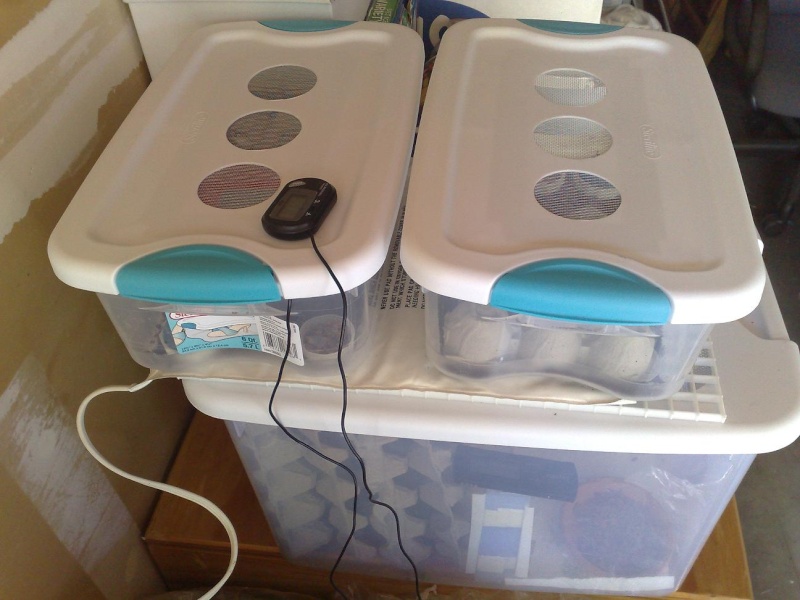
The cricket colony in the garage. Breeding tub on the bottom; rearing tubs on top. Between is a heating pad to
keep everything warm. The breeding tub I try to keep between 70F and 80F. The rearing tubs between 80F and 90F.
All vent holes are covered with aluminum window screen.

The heating pad sits on a piece of light diffuser panel for support. This also allows ventilation for the breeding tub.
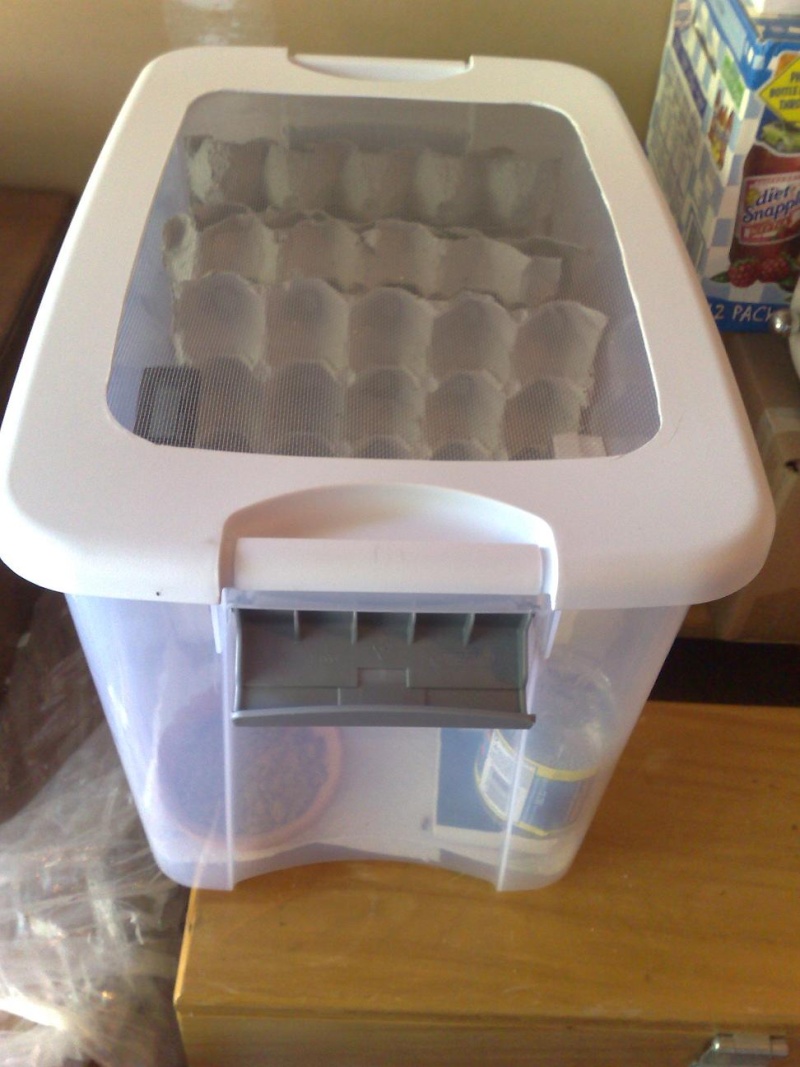
Without the diffuser panel, the heating pad caused the wire screen to sag. Not surprising since the screen is
adhered to the bottom of the lid with duct tape. Some day, I'll buy a hot glue gun.

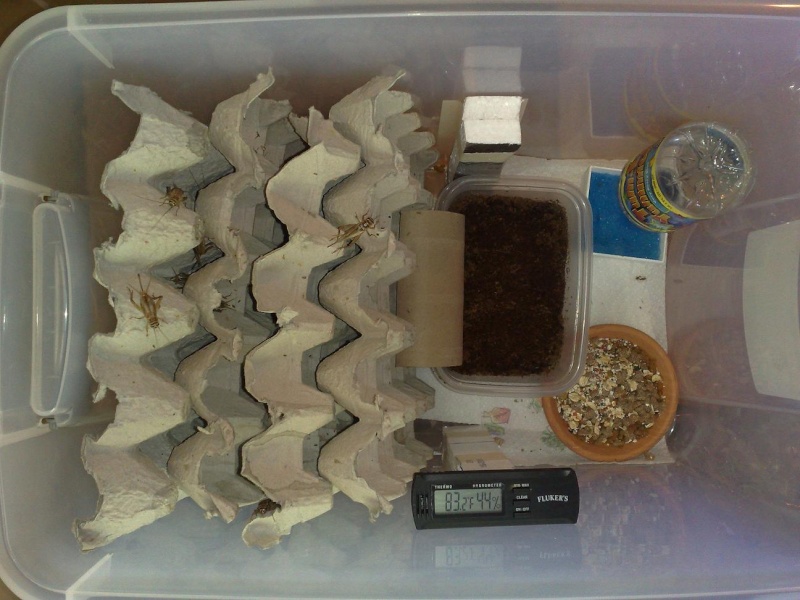
The breeding tub contains cardboard egg flats for housing, a hatching tub for egg laying, a dish for food, a home
made water dispenser, and a digital thermometer. The thermometer is overkill, but I needed something to record
high and low temps and the flukers was just sitting in a drawer. I put some paper towels on the bottom for traction.
This photo was taken right after moving the colony into a clean tub, which is why it looks so pristine. The previous
tub was littered with food, dead crickets, molted carcases and feces. Pretty much what this will look like in a month.
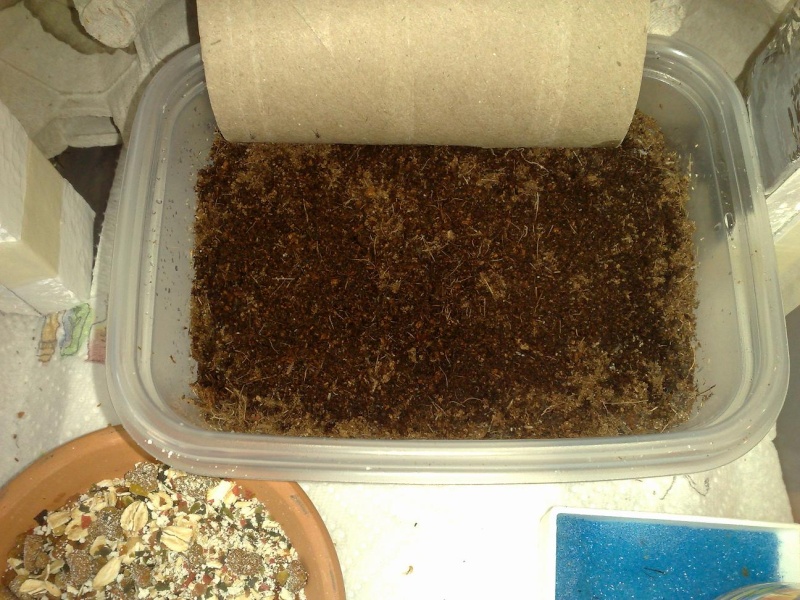
The hatching tub contains moist coco fiber. This is where the females lay their eggs. After a week, the hatching tub
is moved to a rearing tub where the eggs mature and hatch. It takes 6 to 10 days for cricket eggs to incubate.
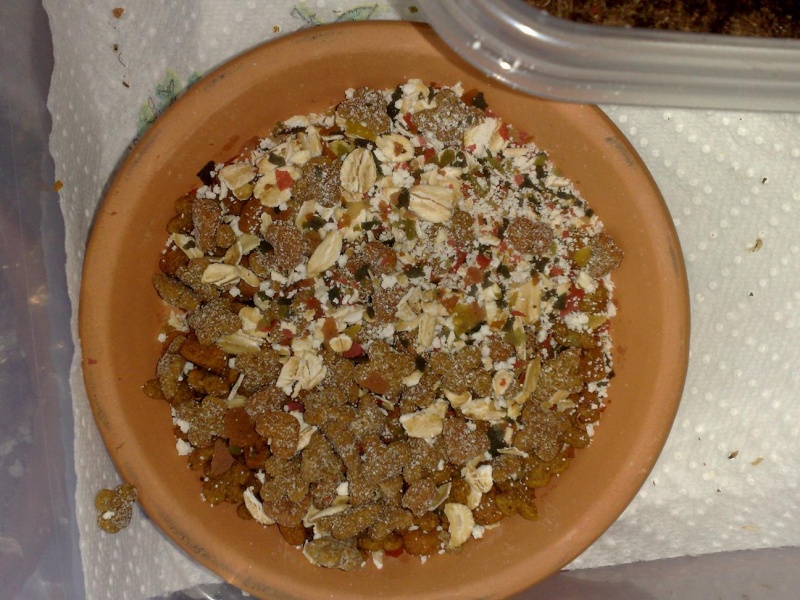
The primary food staple is Purina kitten chow and oats dusted with powered milk. (This batch happens to contain
some flake fish food.) Once or twice a week, I'll add some fruits and veggies (apple, potato, romaine lettuce,
peas--basically, kitchen scraps).
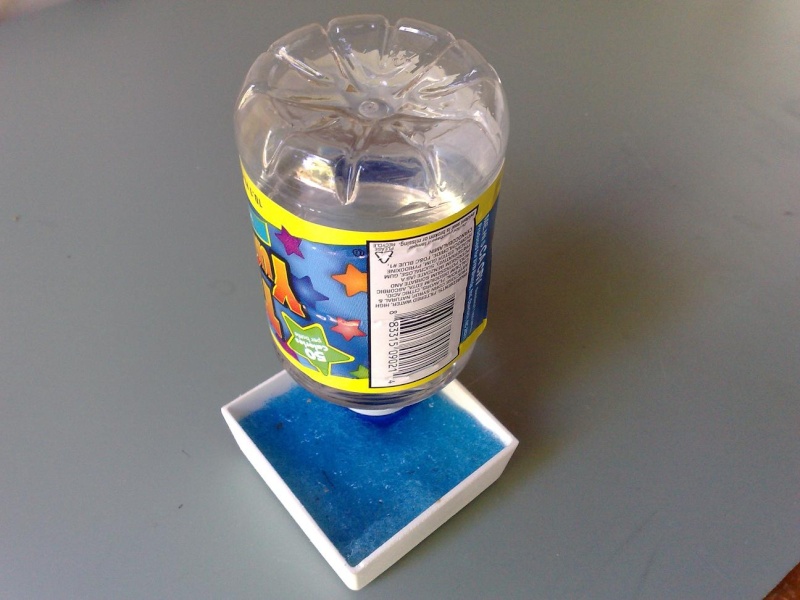
Water is provided with a home made water dispenser. Crickets need water but they love to drown themselves, so
an open dish of water is out of the question. This contraption simply keeps a polyester foam pad saturated with
water. Kitchen sponges mold and grow bacteria, polyester doesn't which is why it's used in aquarium filters.

The breeding tub was seeded a month ago with 3 dozen adult crickets. Since I'm also feeding my emperor from
this stock, I've been adding a dozen crickets a week to keep up with attrition. The breeders are getting rather
sparse at this point, but reinforcements are on the way. Once a month, the whole colony is moved into a clean
tub and the flats replaced. I have a deli a few blocks away that bakes fresh rolls daily, so egg flats are readily
available. These flats are new. In a few weeks, they won't look so pretty.
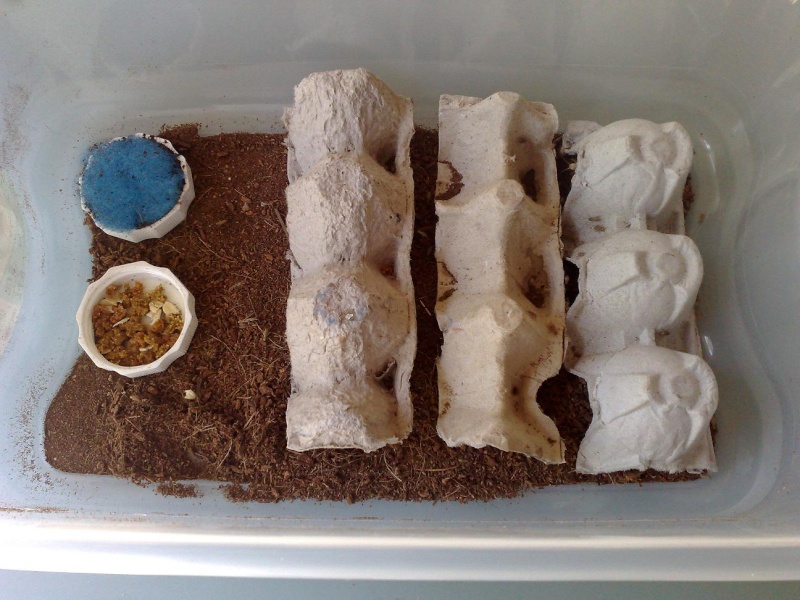
This is my oldest rearing tub. It contains 2 to 3 week old crickets. The coco fiber in the bottom is left over from my
attempt to get all the newly hatched crickets out of the hatching tub. It also helps soak up any water spilled when
filling the water dish. Most of the crickets are under cover.

One, two, three, four, ok-- let's call it a hundred, or, maybe a hundred and fifty. Hell, I don't know.

Just the right size for tossing into the golden orb weaver spider webs that flank my front porch.
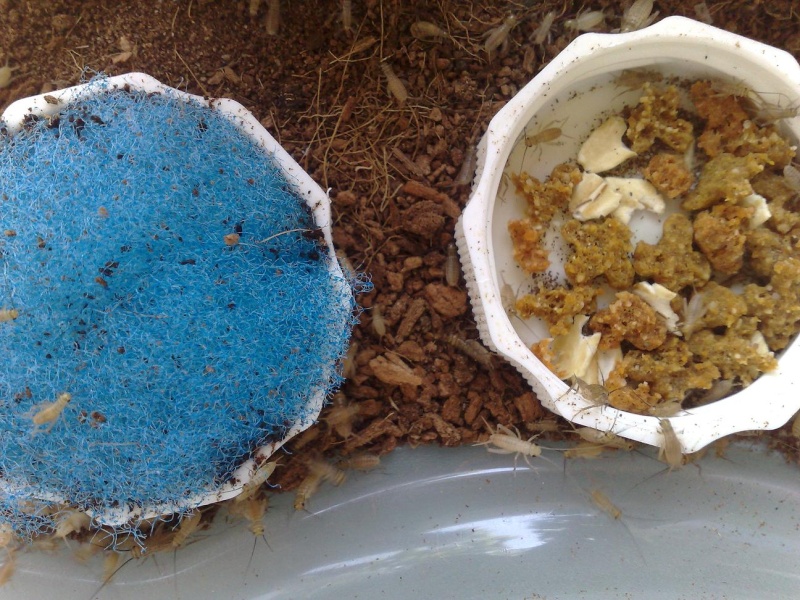
I use bottle caps for food and water dishes. The baby crickets get the same food as the adults. I don't even bother
grinding it up. As you can see, they don't have any trouble devouring it.
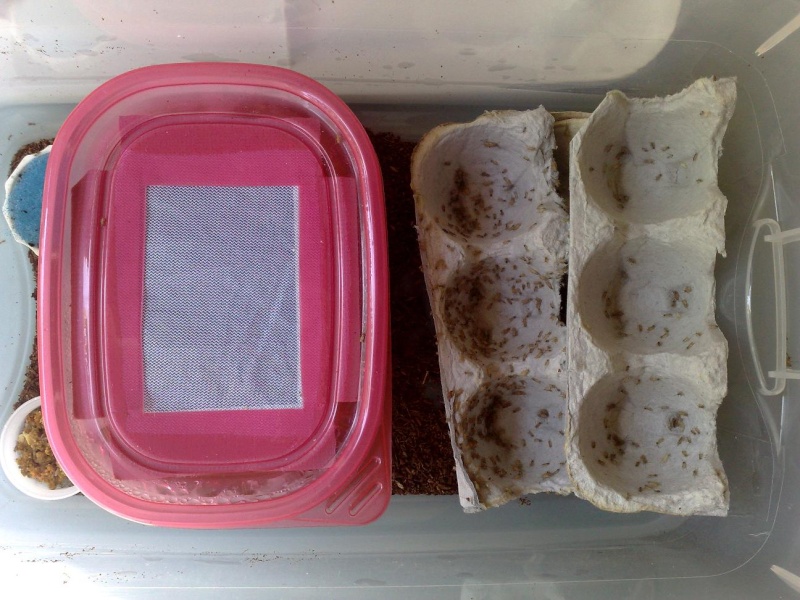
This rearing tub contains 1 to 2 week old crickets. It also houses the latest hatching tub. I placed it here
temporarily until I can put together another raising tub. The lid helps retain moisture. If the eggs dry out,
they won't hatch.
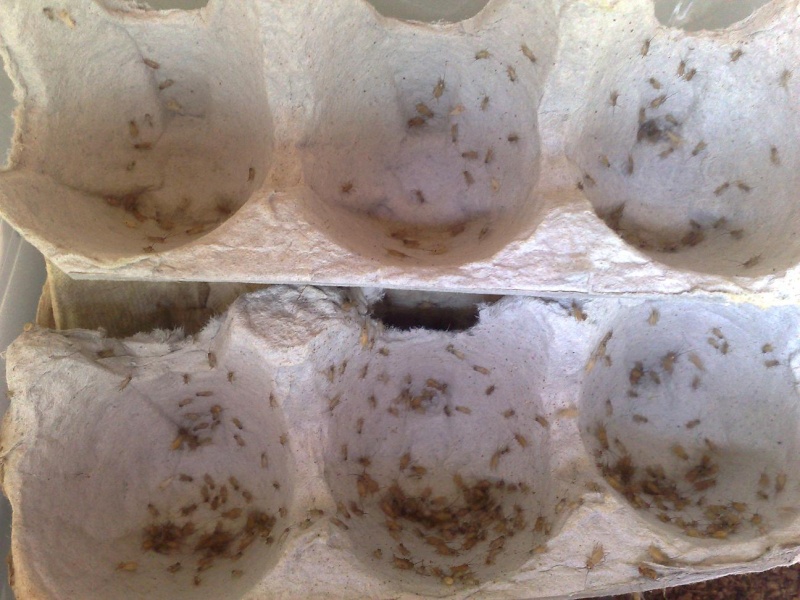
One, two, three, four, ok, another hundred or two hundred crickets. I must be doing something right.

